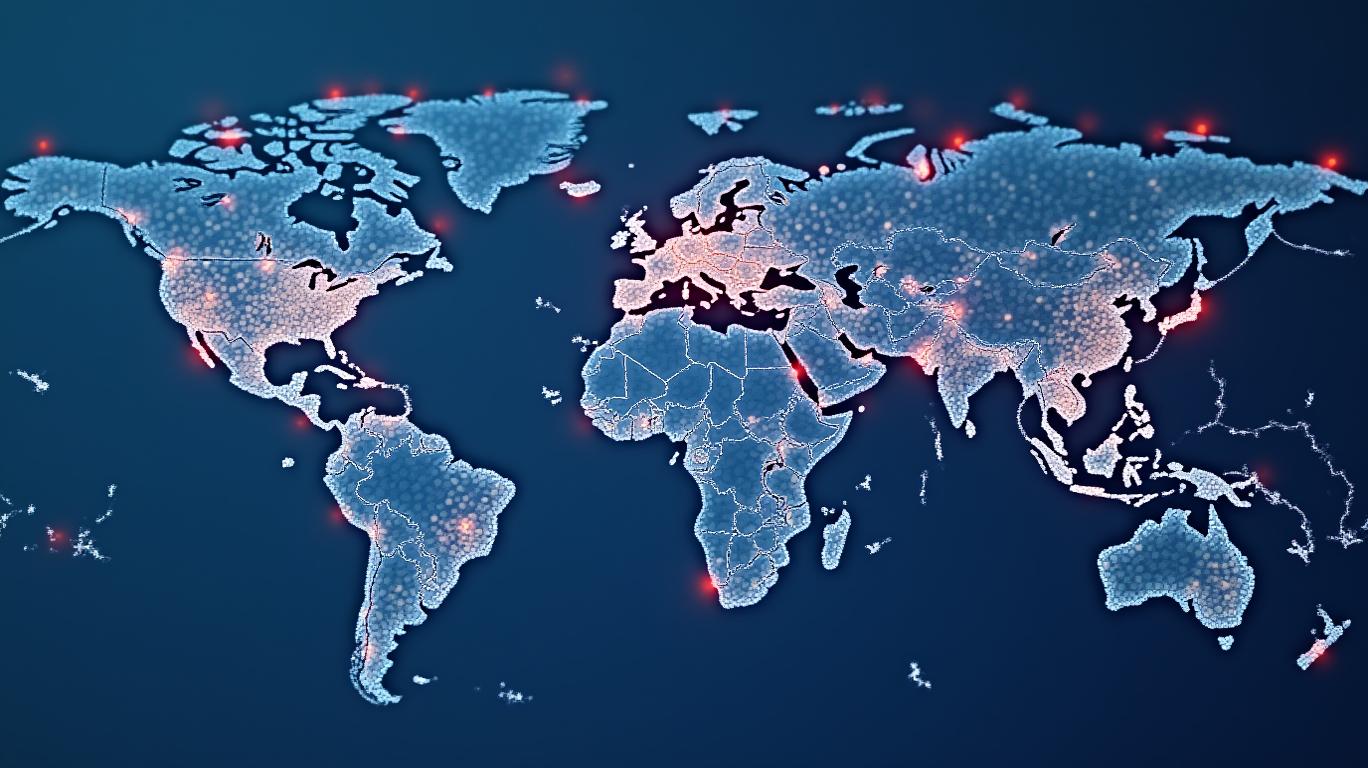Tech's Crossfire: Navigating the U.S.-EU Tariff Storm
The U.S. and EU are on the
of a trade war, with President Trump's proposed 50% tariff on all EU goods—effective June 1, 2025—threatening to upend global tech supply chains. From Apple's iPhone assembly lines to semiconductor factories in Germany, the tech sector faces unprecedented volatility. But this storm also creates opportunities for investors to position for long-term shifts in manufacturing and trade dynamics. Let's dissect the risks, precedents, and strategies to navigate this crossfire.The Vulnerability Landscape
The proposed tariffs apply to all EU imports unless products are “built or manufactured in the U.S.”—a sweeping clause that could disrupt industries reliant on transatlantic trade. Key sectors at risk include:
- Semiconductors: German manufacturers like Infineon and U.S. firms like Intel face higher costs for EU-based materials and components.
- Consumer Electronics: Apple's iPhone production, though primarily in Asia, relies on EU-designed software and European suppliers for critical parts like displays and batteries.
- Automotive Tech: German automakers (e.g., BMW, Mercedes) and their U.S. partners face higher tariffs on electric vehicle (EV) batteries and advanced driver-assistance systems (ADAS).

The immediate market reaction has been stark: European stock indexes like Germany's DAX and France's CAC dropped 2.6% and 2.8%, respectively, while U.S. tech stocks like Apple (AAPL) and Texas Instruments (TXN) fell sharply. But this is just the start.
Historical Precedents: Lessons from Past Tariff Wars
The 2025 tariff regime mirrors past trade conflicts, offering clues on how tech firms adapt—and where investors can profit:
- The 2018 Steel/Aluminum Tariffs:
- The U.S. imposed 25% tariffs on steel and aluminum, triggering price spikes and reshoring efforts.
- Result: Companies like Boeing faced higher costs but shifted suppliers to U.S. mills. Investors who bet on U.S. steelmakers (e.g., Nucor) profited as they filled the gap.
Takeaway: Look for companies that can capitalize on reshoring demand.
The China Trade War (2018–2024):
- Tech firms like Apple accelerated production in Vietnam and India to avoid tariffs.
- Result: Vietnam's tech exports to the U.S. surged 40% by 2024.
- Takeaway: Firms with diversified supply chains (e.g., HP, Dell) outperformed those reliant on single regions.
Defensive Plays: Where to Invest Now
The key is to avoid companies overly exposed to EU-U.S. trade and focus on firms with:
- Diversified Supply Chains:
- Microsoft (MSFT): Relying on U.S.-based cloud infrastructure and Xbox production, its exposure to EU tariffs is limited.
Nvidia (NVDA): Invested $500B in U.S. AI chip factories under the CHIPS Act—positioned to dominate domestic manufacturing.
Domestic Tech Leaders:
- Intel (INTC): A beneficiary of the CHIPS Act, Intel's U.S. factories are shielded from EU tariffs. Its stock could rebound if reshoring accelerates.
Dow (DOW): A U.S. industrial giant with minimal EU supply chain reliance, offering stability in turbulent markets.
Software & Services:
- Amazon (AMZN): Cloud services (AWS) and software are less tariff-sensitive than hardware.
- Adobe (ADBE): Software licensing revenue is insulated from physical trade barriers.
The Long-Term Opportunity: Reshoring's Silver Lining
While short-term volatility is inevitable, the tariffs could catalyze a structural shift toward U.S. manufacturing. The CHIPS Act, which allocated $52B for domestic semiconductor production, is already bearing fruit:
- TSMC's new Arizona factory will employ 2,000 workers by 2026.
- Investment Thesis: Companies enabling reshoring—like ASML (ASML) for semiconductor equipment or Caterpillar (CAT) for industrial machinery—will see sustained demand.
Risk Mitigation: What to Avoid
- Apple (AAPL): Its EU-linked components and manufacturing in Asia make it vulnerable to the 25% iPhone tariff threat.
- Automakers (GM, Ford): EV batteries and ADAS systems sourced from the EU face steep tariffs unless reshored.
- Nordic Tech Firms (e.g., Ericsson): Their U.S. sales could drop sharply under the 50% levy.
Conclusion: Act Now, but Think Long-Term
The U.S.-EU tariff war is a catalyst for tech sector restructuring. Investors should:
1. Rotate into U.S.-centric firms with diversified supply chains.
2. Avoid overexposure to EU-linked equities until trade terms stabilize.
3. Monitor reshoring trends: The CHIPS Act and 2025 tariff truces could signal buying opportunities.
This is no time to be passive. The next few months will separate the winners who adapt from the losers stuck in the crossfire.
The opinions expressed here are for informational purposes only and do not constitute financial advice. Always consult a professional before making investment decisions.

Comments
No comments yet